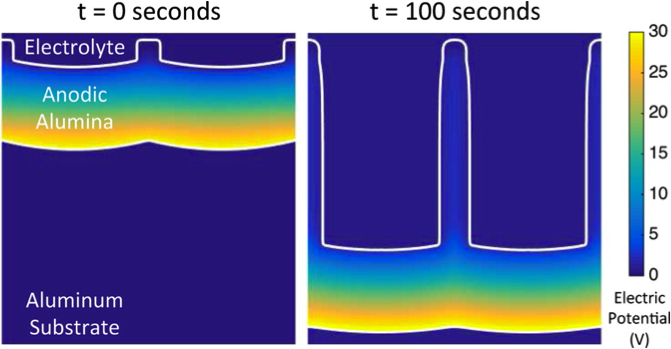
Scientific Achievement
A new numerical approach for simulating the growth of nanopores during the anodization (electrochemical oxidation) of aluminum was developed, allowing the multidimensional extension of a successful one-dimensional model with a series of interfacial. Simulations indicate that anions adsorbed to the alumina surface play a significant role in the growth and morphology of the nanopores.
Significance and Impact
Fundamental understanding of the interfacial reactions at the electrolyte/alumina interface was developed. Such understanding will guide the development of new electrolytes for improved control over nanopore growth. Computational techniques and software from this work are being utilized in simulations of the evolution of metallic Mg and Li battery anodes studied by JCESR.
Research Details
- The level set method was used to define and evolve the interfaces between the three materials and the smoothed boundary method was used to efficiently solve the model equations in the evolving domain.
- A new scheme was developed to efficiently track interfacial concentrations and reaction rates on a diffuse interface.
- Unlike previous models, this model captures the effects of the pH of the electrolyte on the pore morphology and growth rate.
Work was performed at University of Michigan (JCESR partner) by S. DeWitt and K. Thornton, J. Phys. Chem. C, 2016, 120 (4), 2419-2431. Work was partially funded by a DOE Office of Science Graduate Fellowship.

